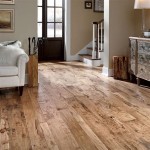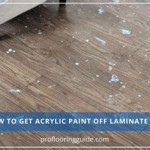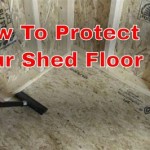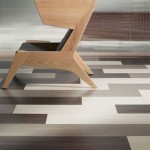Does Vinyl Plank Flooring Work in Bathrooms?
The question of whether vinyl plank flooring is a suitable choice for bathrooms is a common one among homeowners and contractors alike. The bathroom environment presents unique challenges to flooring materials due to the constant presence of moisture, humidity, and the potential for spills. Therefore, selecting a flooring option that can withstand these conditions is crucial for longevity and preventing damage such as mold and mildew growth.
Vinyl plank flooring has gained considerable popularity in recent years, largely attributed to its affordability, ease of installation, and aesthetic versatility. It mimics the appearance of natural materials like hardwood or stone, offering a visually appealing alternative at a fraction of the cost. However, understanding its performance characteristics in a high-moisture environment like a bathroom is essential to making an informed decision.
This article will explore the properties of vinyl plank flooring in relation to bathroom conditions. Factors such as water resistance, installation methods, maintenance requirements, and potential drawbacks will be examined to provide a comprehensive overview of the suitability of vinyl plank flooring for bathroom applications.
Understanding the Water Resistance of Vinyl Plank Flooring
The primary appeal of vinyl plank flooring for bathrooms lies in its water resistance. Unlike natural wood, vinyl is a synthetic material that does not readily absorb water. This inherent property makes it significantly more resistant to moisture damage, such as warping, swelling, or rotting, which are common concerns with wood flooring in bathrooms. However, it is important to distinguish between water resistance and waterproofing. While vinyl plank is highly water-resistant, it is not necessarily waterproof, and the degree of water resistance can vary depending on the specific type and quality of the product.
There are typically two main types of vinyl plank flooring: vinyl plank and waterproof vinyl plank (often referred to as WPC or SPC – wood plastic composite or stone plastic composite, respectively). Standard vinyl plank offers good water resistance on its surface, meaning it can withstand splashes and spills if cleaned up promptly. However, if water penetrates through the seams between the planks or around the perimeter of the room, it can seep underneath the flooring and cause problems. This is where waterproof vinyl plank comes into play.
Waterproof vinyl plank flooring, particularly WPC and SPC varieties, features a core layer that is completely impervious to water. This core prevents water from penetrating the flooring structure, even if it sits on the surface for an extended period or seeps through the seams. This inherent waterproof nature makes it a superior choice for bathrooms where standing water is more likely to occur. However, even with waterproof options, proper installation and sealing are critical to ensure complete protection against moisture intrusion.
The construction of vinyl plank flooring also contributes to its water resistance. Typically, it consists of multiple layers, including a wear layer, a print layer, and a backing layer. The wear layer, which is the top surface of the flooring, is designed to protect against scratches, stains, and scuffs. The print layer provides the visual aesthetic, mimicking the look of wood, stone, or tile. The backing layer provides stability and cushioning. The type and quality of these layers affect the overall water resistance and durability of the flooring.
The seams between vinyl planks are often a point of concern regarding water penetration. While the surface of the planks themselves may be water-resistant or waterproof, water can still seep through the gaps between them if they are not properly sealed. Some vinyl plank flooring products feature interlocking edges that create a tighter seal, reducing the likelihood of water intrusion. Additionally, using a sealant along the perimeter of the room and around fixtures like toilets and sinks can further protect against water damage.
Installation Methods and Their Impact on Water Resistance
The installation method employed for vinyl plank flooring significantly impacts its performance in a bathroom environment, particularly regarding water resistance. There are several common installation methods, including glue-down, click-lock (or floating), and peel-and-stick. Each method offers its own advantages and disadvantages in terms of ease of installation, cost, and water resistance.
Glue-down vinyl plank flooring involves adhering the planks directly to the subfloor using a special adhesive. This method provides a strong and secure bond, minimizing the risk of water seeping underneath the flooring. Properly installed glue-down vinyl plank is considered to be highly water-resistant, as the adhesive creates a barrier that prevents moisture from penetrating the seams. However, glue-down installation is typically more labor-intensive and requires careful preparation of the subfloor to ensure proper adhesion. It is also more difficult to remove and replace than other installation methods.
Click-lock, or floating, vinyl plank flooring features interlocking edges that allow the planks to snap together without the need for adhesive. This method is generally considered easier and faster to install than glue-down, making it a popular choice for DIY projects. However, click-lock flooring is more susceptible to water penetration, as the seams between the planks are not as tightly sealed as with glue-down installation. Water can seep through the gaps and accumulate underneath the flooring, potentially leading to mold and mildew growth. To mitigate this risk, it is crucial to choose a high-quality click-lock product with tight-fitting seams and to use a sealant along the perimeter of the room.
Peel-and-stick vinyl plank flooring is the simplest installation method, involving removing a backing paper and pressing the planks onto the subfloor. While easy to install, peel-and-stick flooring is generally considered the least water-resistant option. The adhesive used on these planks is often not as strong as that used for glue-down installation, and the seams between the planks are typically not as tight as with other methods. This makes peel-and-stick flooring more prone to water penetration and less suitable for high-moisture areas like bathrooms. Over time, the adhesive can also degrade due to moisture exposure, causing the planks to lift or shift.
Regardless of the installation method chosen, proper subfloor preparation is essential for ensuring the longevity and water resistance of vinyl plank flooring in a bathroom. The subfloor should be clean, dry, level, and free of any debris or imperfections. Any cracks or unevenness should be repaired before installation to prevent water from accumulating underneath the flooring. Additionally, it is recommended to install a moisture barrier underneath the vinyl plank, especially in bathrooms with concrete subfloors, to further protect against moisture intrusion.
Maintenance and Longevity Considerations in Bathroom Applications
Proper maintenance is crucial for preserving the appearance and extending the lifespan of vinyl plank flooring in a bathroom. While vinyl plank is relatively low-maintenance compared to other flooring options like hardwood or carpet, regular cleaning and care are necessary to prevent damage and maintain its water resistance. The frequency and type of cleaning required will depend on the amount of traffic and moisture exposure in the bathroom.
Regular sweeping or vacuuming is essential to remove dirt, dust, and debris that can scratch or dull the surface of the vinyl plank. It is important to use a vacuum cleaner with a soft brush attachment to avoid damaging the wear layer. Spills should be cleaned up immediately to prevent staining or water damage. For general cleaning, a mild detergent diluted in water is usually sufficient. Avoid using harsh chemicals, abrasive cleaners, or scouring pads, as these can damage the finish and reduce its water resistance.
For more stubborn stains or dirt, specialized vinyl floor cleaners can be used. Follow the manufacturer's instructions carefully and test the cleaner on a small, inconspicuous area first to ensure it does not damage the flooring. It is also important to avoid using excessive amounts of water when cleaning vinyl plank flooring, as this can cause water to seep through the seams and underneath the floor. Always wring out the mop thoroughly before cleaning, and dry the floor as soon as possible after washing.
In addition to regular cleaning, there are several other maintenance practices that can help extend the lifespan of vinyl plank flooring in a bathroom. Using mats or rugs in high-traffic areas and near water sources, such as sinks and showers, can help protect the flooring from scratches, stains, and water damage. Trimming pets' nails regularly can also help prevent scratches. Avoid dragging heavy objects across the floor, as this can cause gouges or dents. If furniture is moved, use furniture pads to protect the flooring from damage.
The longevity of vinyl plank flooring in a bathroom will depend on several factors, including the quality of the material, the installation method, and the level of maintenance provided. With proper care and maintenance, high-quality vinyl plank flooring can last for many years in a bathroom environment. However, it is important to be realistic about its limitations and to take steps to protect it from excessive moisture exposure. Regularly inspect the flooring for any signs of damage, such as warping, lifting, or discoloration, and address any issues promptly to prevent further problems.

Can I Install Vinyl Planks In Bathrooms Signature Flooring Floor Tiles

Dos And Don Ts For Installing Vinyl Plank Floors In The Bathroom Advice Homeowners

Dos And Don Ts For Installing Vinyl Plank Floors In The Bathroom Advice Homeowners

How To Install Vinyl Plank Floors In A Bathroom Over Tile

How To Install Vinyl Plank Flooring In A Bathroom Fixthisbuildthat

Luxury Vinyl Flooring Is A Great Choice For Chic Bathrooms

How To Install Vinyl Plank Flooring In A Bathroom As Beginner Home Renovation

What Is The Best Flooring For Bathrooms Tarkett

Is Vinyl Plank Flooring Waterproof Twenty Oak

Best Bathroom Flooring Options
See Also







